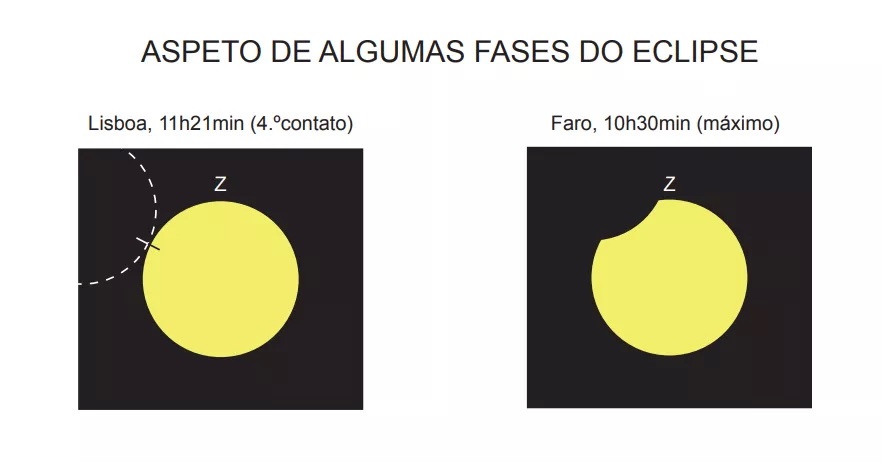On June 10, the date on which Portugal Day is celebrated, there is an annular solar eclipse that will be visible as a partial eclipse throughout Portuguese territory.
As the Lisbon Astronomical Observatory (OAL) explains, “The moon’s shadow over Earth, that is, the region where the annular eclipse is, will travel on a path from northeastern North America to northeast Asia, through Greenland and the Arctic Ocean. The maximum cancellation time is 3 minutes. and 48 Sec. The eclipse will be visible from northeastern North America, Europe, northern Asia and the northern Atlantic Ocean.
The eclipse will be visible only as a partial eclipse in the entire Portuguese territory, which will be in the twilight of the moon. In most of the national territory, the partial eclipse will be barely noticeable because the percentages of the solar area covered are very low, ranging from 4% to 10% on the mainland, 30% in the Azores, and 6% in Madeira.
In Faro, the eclipse begins at 9:51 a.m., culminates at 10:30 a.m. and ends around 11:10 a.m.
Those who cannot follow the safety instructions can follow the eclipse online, in live broadcasts, such as Youtube, and timeanddate.com platform, or even now Doing a virtual telescope project.
safety rules
First rule: Don’t look at the sun directly without eye filters*.
Rule 2: Never use sunglasses, carbon black glass, film, photo negatives, radiographs, floppy disks, CDs, DVDs, gelatin filters, Polaroids, Wratten filters or aluminum foil on any occasion and under any circumstance when observing the sun . Weld filters under No. 14.
Third rule: Never use eye sunscreens with binoculars, cameras, telescopes, or other optical instruments.
Fourth rule: Never put sunscreens in the eyepiece of the optical instrument, that is, the lens you look at through binoculars or a telescope. In this case, the sunscreen dissolves, leaving enough density to burn the retina.
Rule 5: Never use sunscreens that are already used or stored, before they have been properly tested, as they may have small holes, scratches or imperfections that allow more radiation to pass through than is allowed. Remember that eye burns are painless, the danger is great and your health is at risk. Before using it, you should test its integrity by looking through it at a strong (and nearby) light in the house and looking for blemishes, holes, and scratches.
Rule 6: Never exceed continuous observation with special protective eyewear for periods longer than 30 seconds, always taking 3-minute breaks. This prevents heat buildup in the retina. It is important to remember that retinal heating is not felt like the feeling of skin heating, because retinal burns do not cause pain! If you prolong the observation period for a long time, the retinal temperature rises without being aware of it and can cause irreversible damage including partial or total blindness.

“Coffee trailblazer. Social media ninja. Unapologetic web guru. Friendly music fan. Alcohol fanatic.”


